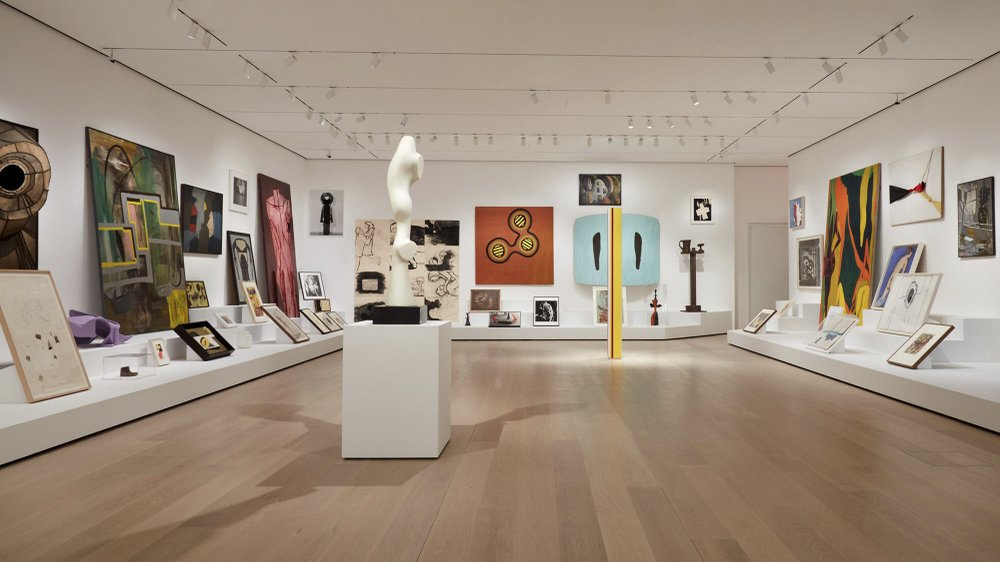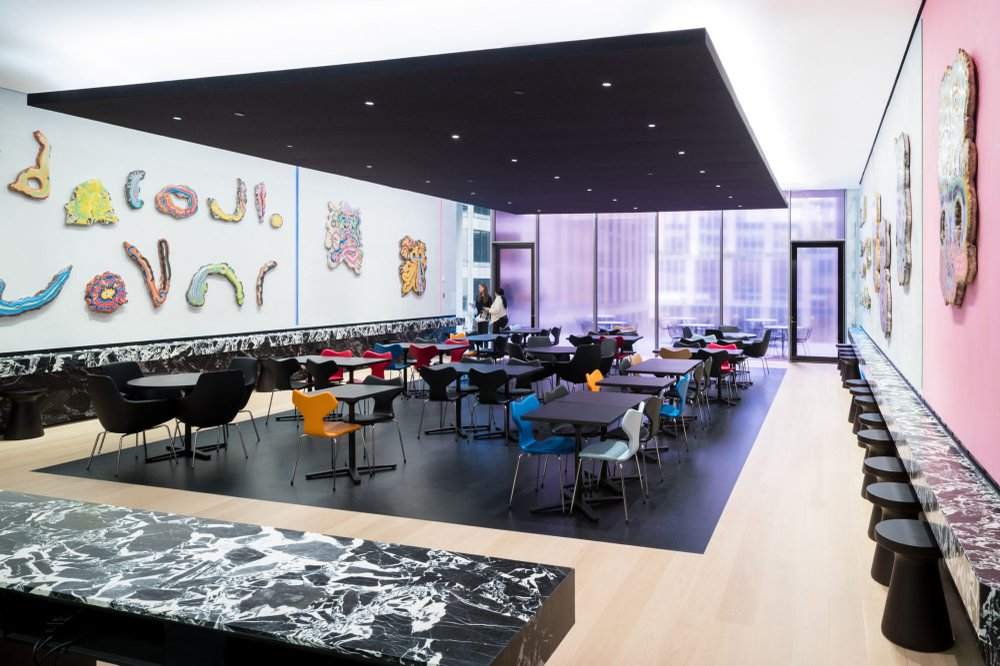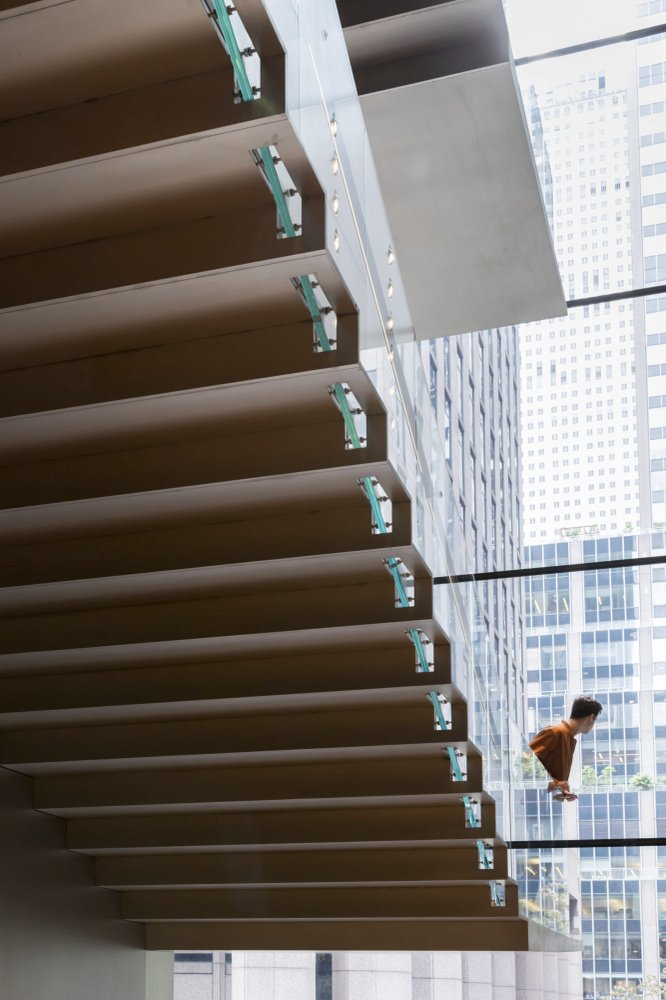
The installation "Artist's Choice: Amy Sillman—The Shape of Shape," part of the renovation and expansion effort at MoMA in New York. /AP Photo
The installation "Artist's Choice: Amy Sillman—The Shape of Shape," part of the renovation and expansion effort at MoMA in New York. /AP Photo
The Museum of Modern Art's new 450-million-U.S.-dollar, 47,000-square-foot expansion offers visitors more than much-needed elbow room. It emphasizes new juxtapositions of works to encourage broader perspectives and new narratives. The revamped MoMA, a third bigger than the old one, opens to the public on October 21.
While iconic works by the likes of Monet, Van Gogh, Picasso and Pollock remain dependably on view, visitors are invited to see them in a new light, now displayed side by side with less familiar works by women and minorities, and artists from places like Africa, South America and Asia.

The installation "View of Fossil Psychics for Christa" by Kerstin Brätsch in The Caroll and Milton Petrie Terrace Sixth Floor Café, part of the renovation and expansion effort at MoMA in New York. /AP Photo
The installation "View of Fossil Psychics for Christa" by Kerstin Brätsch in The Caroll and Milton Petrie Terrace Sixth Floor Café, part of the renovation and expansion effort at MoMA in New York. /AP Photo
The goal is to rethink the familiar and make Modernism feel fresh and challenging again.
"Sometimes even small juxtapositions can have a big impact," says Jodi Hauptmann, senior curator of drawings and prints at MoMA. "On the fifth floor, for example, Van Gogh's 'The Starry Night' is now shown in the same gallery as a collection of ceramics made at the same time by George Ohr, of Biloxi, Mississippi. It's interesting to see those things together."
Picasso's 1907 "Les Demoiselles d'Avignon" now shares gallery space with a 1967 painting by African-American artist Faith Ringgold featuring an interracial gunfight. Seeing the two works together provides fresh perspective on both, and seems to emphasize the violence of Picasso's fractured bodies.
To keep creating fresh juxtapositions, offer up more of the museum's permanent collection, and place greater focus on multiculturalism, the revamped MoMA promises to rotate many of the works in its galleries every six months.
In some of the galleries, sculpture, painting, design, architecture, photography and film are all featured together.
Other galleries continue to focus on a single medium. Explains Juliet Kinchin, curator in the department of architecture and design: "Each floor has a broad chronological frame, but within each frame there's more flexibility, with occasional breakouts to create a dialogue."
"We're trying to have some areas that are fully integrated in terms of departments, and other areas where you can really focus solely on a particular medium," she says.

An interior view of the Blade Stair Atrium, part of the renovation and expansion effort at MoMA in New York. /AP Photo
An interior view of the Blade Stair Atrium, part of the renovation and expansion effort at MoMA in New York. /AP Photo
To help alleviate crowds, MoMA now has more ways to reach the galleries, including through a new wing on the west side.
The expansion, developed by MoMA with architects Diller Scofidio and Benfro in collaboration with Gensler, also includes a larger ground floor — including two new galleries — that is free and open to the public.
There is also a new studio space for live and experimental programming, including music, sound, spoken word and expanded approaches to the moving image.
Source(s): AP